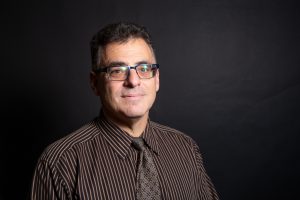The assistant vice president for student affairs and director of financial aid breaks down the realities of borrowing money to start your optometry career.

Optometry program costs are increasing across the board, and student indebtedness is creeping up, too. Here, Mr. Vito J. Cavallaro, assistant vice president for student affairs and director of financial aid for SUNY Optometry, breaks down trends in financial aid and how the College’s students may minimize debt and increase their earning potential.
Per the College Factbook, fewer SUNY Optometry students are receiving financial aid year over year. Why?
More students who attend optometry school are coming from more affluent backgrounds. We have many more children of optometrists attending the College than in the past. Students who do not need to rely on loans are better positioned to benefit by starting to practice without the burden. Students who are less affluent are more likely to view loans as an impediment to education because the amounts being financed are large.
Meanwhile, the average level of indebtedness for students who do borrow is trending upward.
The costs of optometric education are increasing. Tuition, fees and living expenses in New York City have increased, leading directly to the increase in indebtedness. Federal and state funding for financial aid in graduate school has also significantly decreased over the past 10 years.
Why is SUNY Optometry’s overall indebtedness level lower than the national average for optometry programs?
New York State resident tuition is still an excellent value compared to private schools and keeping costs down is part of SUNY Optometry’s long-range plan and one of our institutional goals. Since this is a priority of the College, maximum efforts are expended to maintain this affordability. Also, students in their second year may qualify for resident tuition if they meet certain requirements. Our students also receive extensive counseling about managing their debt and making sound financial choices.
How do the trends you see at the College compare to the greater trends in optometry programs and across health care professions?
The trends at SUNY Optometry are comparable to the greater trends across the country. Students are focusing on return of investment and comparing costs, quality of education and scholarships offered by their top school choices. The market for top applicants has become more competitive with many schools using scholarships or tuition discounts to attract top tier students. The trends across health care are very similar, but the debt levels seen in medical and dental education are significantly higher. Medicine and dentistry are seeing a shortage in primary care providers because many doctors are looking for more lucrative specialties.
What is the College doing to help students surmount the challenges of indebtedness in the areas of recruitment, financial aid and matriculation?
The entire financial aid process is geared to counseling students about their choices and their impact on loan debt. Each interviewing student receives a 20-minute counseling session about financial aid and housing and the importance of sound decision-making. Once students are enrolled, they receive entrance and exit interviews and debt management sessions to keep them informed. We also have a small amount of money that the director of career services and minority enrichment will be use to potentially pay for Boards preparation.
Although student indebtedness continues to increase, the College’s default rate is at 0 percent. We strive to increase fundraising and scholarships for top students. We offer discussions and presentations to give students information on limiting debt and making sound financial choices, and our Smart Track financial literacy website helps with everything from banking to budgeting to borrowing.
What tips would you offer to students who are looking to keep the costs of matriculation low?
It is important that students try to limit their living expenses as much as possible. Students can choose to live in Queens as opposed to Manhattan, eliminate landlines and cable. Shop in discount stores and buy in bulk. Make their own lunches instead of eating out. If you live like a doctor while you are a student, you will live like a student when you are a doctor. Students should also seek scholarship opportunities from groups, organizations and clubs with which they or their parents are affiliated. And the better a student does academically, the better the chance for scholarships.
And how can they maximize their earning potential after graduation?
Doing a residency gives new graduates more expertise, which may help them earn more in a niche practice. But this is dependent on how they market themselves and negotiate their salary. Students should research averages for optometrists in various settings, know what they can bring to an office and attend the College’s career symposium and other interview and negotiation workshops. Information, counseling and networking services are also available from the Career Development Center. Every student can learn about career choices and how to market themselves.